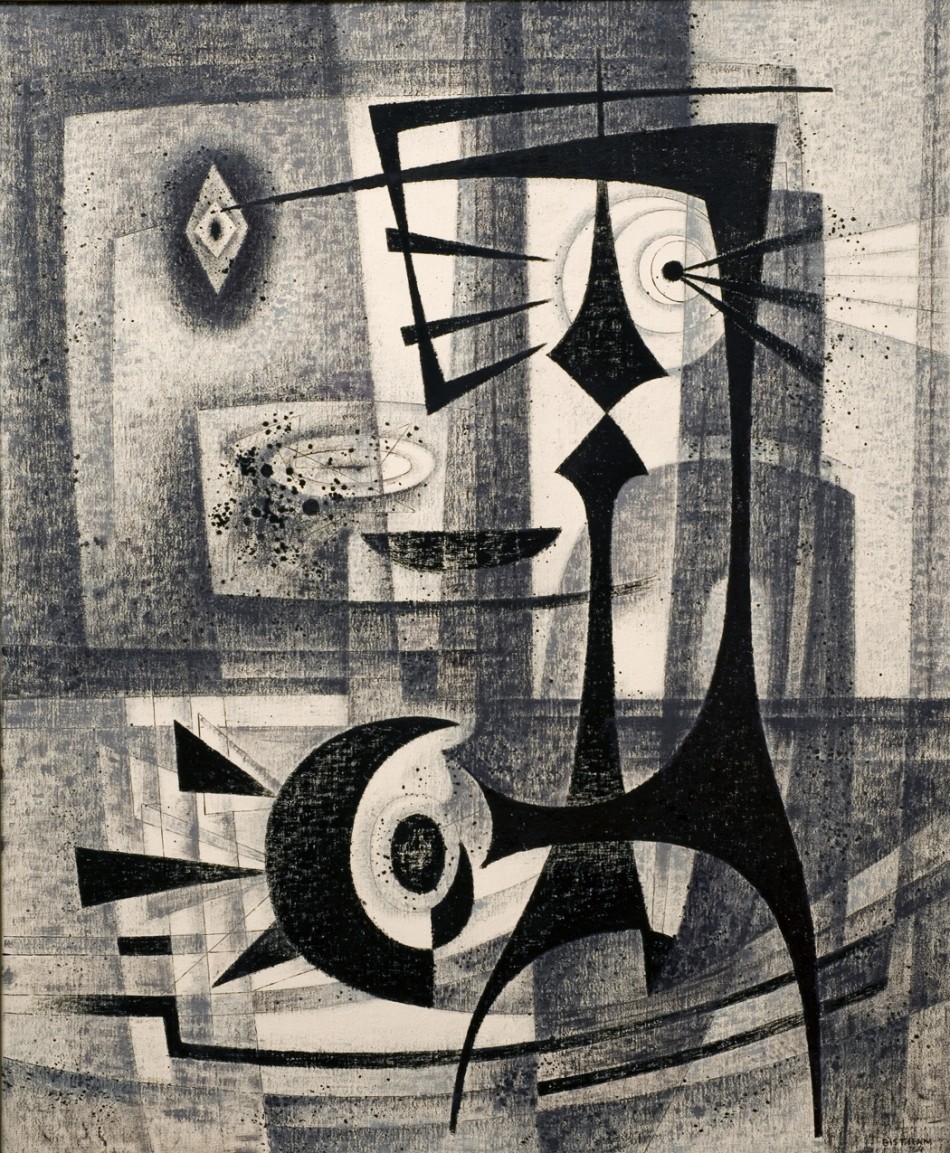
Paint Arrest: Emil Bisttram on the Flip Side
I had a floor glue moment the other day at Aaron Payne Fine Art when I turned around and looked dead on at Homage (recto), a 5 x 4 foot canvas by Emil Bisttram, astonishingly painted as a black-and-white (almost grisaille) abstract on front (1964), and, on the back, in saturated blues and yellows, a 1932 Revelation scene. The angel who appears to Saint John of Patmos, does so in an arresting geometry of wing bleeding into halo then nimbuses. It was not “astonishing” for Bisttram to use both sides of the canvas; he often did. But the front and back being painted three decades apart is quite unusual, explains Aaron Payne.
Let’s take Revelation again, the angel’s muscled arm, hooded lids. The scene goes in chronological proximity to Bisttram’s memory of Mexico in 1932. He had won a Guggenheim fellowship to study in Mexico but it was the Great Depression and the fellowship was cut off at five months in 1931. He painted this just one year after he had returned to Taos (which he had first visited, from New York, in 1930).
One can see in the Revelation side a clear homage to Rivera, though the interpretive possibilities of St. John on his rock are complex and fascinating. The angel figure including her wing and finger pointing spans the vertical canvas’s left side. Her feet hover above the rock where John sits above a dark jut of waves triangulating turquoise to cobalt blue. The petal-edged cloud abstracts desert buttes.
One could call this a universal picture; for St. John, the light of revelation offers a kinetic stillness. The angel wears bright yellow; her worker’s arms and pendant feet have more than shades of discernable Rivera styling. Think now of Taos (and the rift valley), and look again into the cloud. Then back at the saint’s aquiline profile and silhouette – stoic, planar, ancient.
None of which and all of which – seen as geometry of spiral and light pool – bear on the composition on front, 1964’s Homage. If I close my eyes and squint a little I think can see in Homage the mighty tower of Brooklyn Bridge, or at least a gateway image. The blinking eyeball emits a halo radiating a cone of light in the upper right of the painting: a spell? A foreground of black glyphs, a calligraphy and pattern language, go to planes behind planes; the work is an indelible study in what Clem Greenberg likely would have considered essential flatness.

Bisttram danced over time with variegated influences we can observe or impose: Russian constructivism, certainly expressionist color ways, then a reduction in color that let the dynamism of form do the work. Evocation of sacred is the impermeable impression of this terrific painting, appearing miraculous to me on a winter Wednesday. Auction records for Bisttram are around $80,000. Payne said this piece is on offer for $145,000 and is quite a rare juxtaposition of two entirely different periods in the artist’s 46-year maturity between 1930 and his death in 1976.
Painting: “Homage” (recto), 1964, Oil on canvas, 60 x 48 inches. signed and dated lower right: Bisttram ’64
“Revelation (of St. John of Patmos)”, Circa 1932

